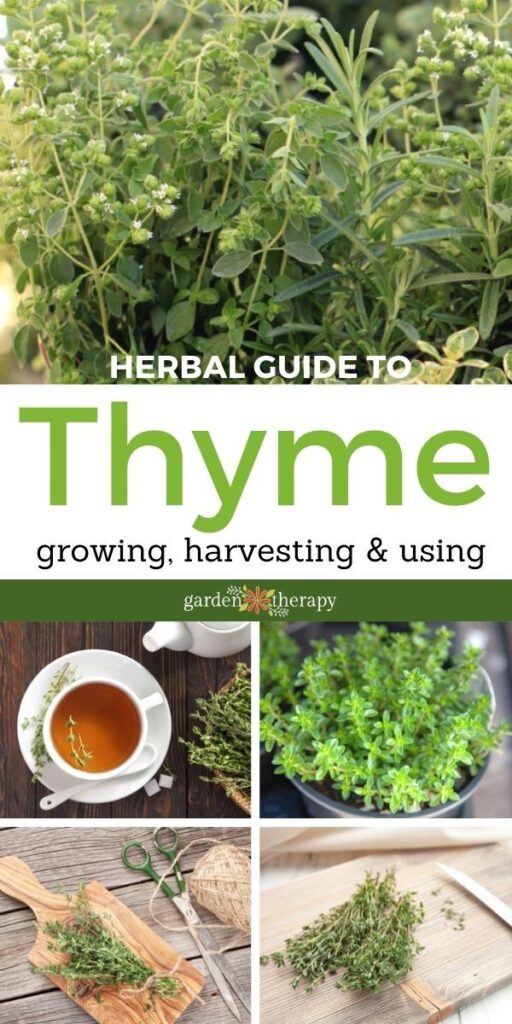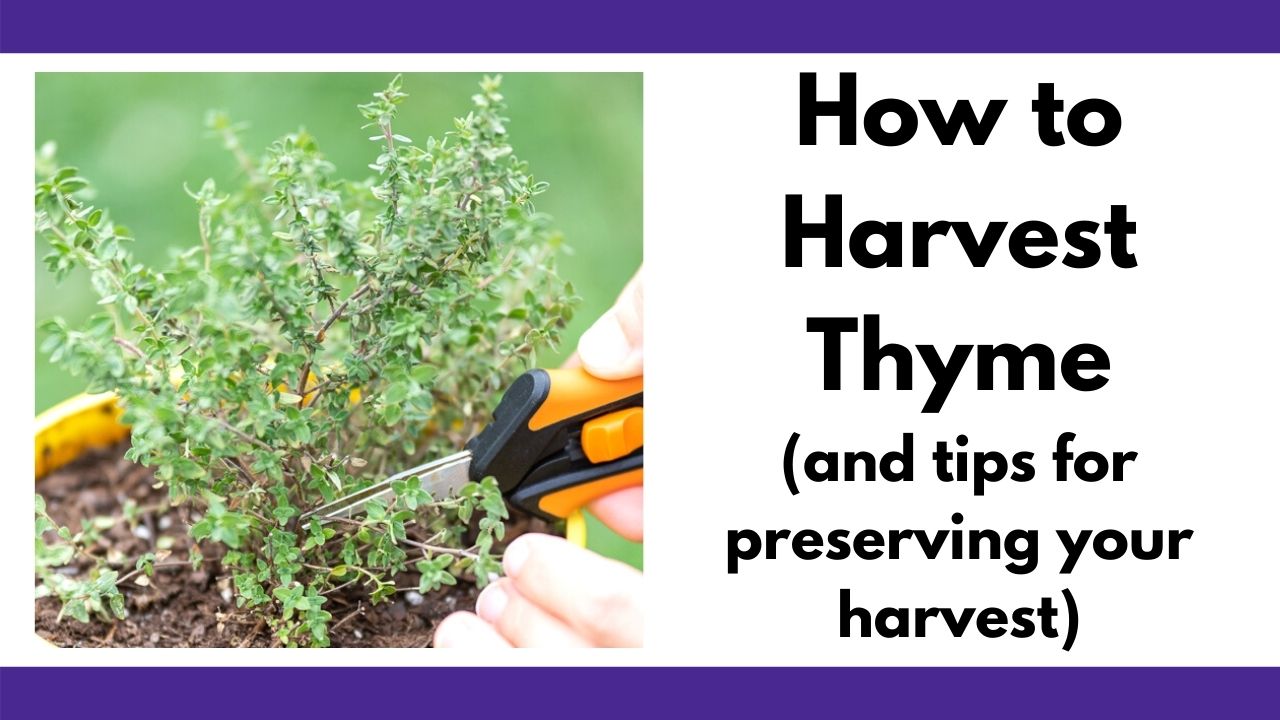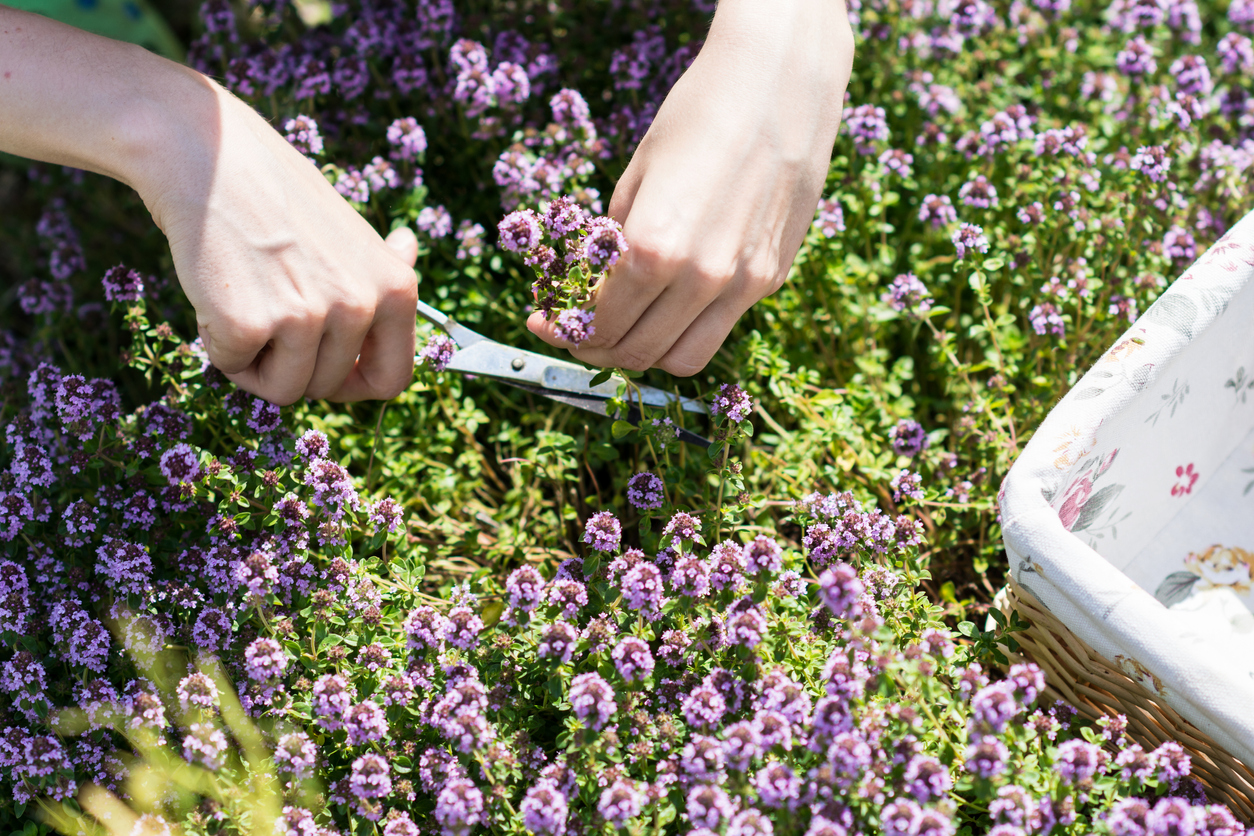Identifying the Perfect Moment to Pick Your Thyme
Timing is crucial when it comes to harvesting thyme. The moment you harvest your thyme plants can significantly impact the flavor, aroma, and potency of the herb. Harvesting thyme at the right time ensures that you get the best out of your crop, while picking it too early or too late can result in a less desirable product. When is thyme ready to harvest? The answer lies in understanding the growth cycle of thyme and recognizing the signs of readiness. By doing so, you can enjoy the optimal flavor and aroma of your thyme, and make the most of your harvest.
How to Check for Thyme Readiness
To determine when is thyme ready to harvest, it’s essential to inspect the plants regularly for signs of readiness. Here’s a step-by-step guide to help you check for thyme readiness:
First, examine the leaf color. Mature thyme leaves are typically a deep green color, while immature leaves may appear lighter or more yellowish. Next, check the leaf texture. Ready-to-harvest thyme leaves should be slightly tender but still retain some crunch. Avoid harvesting thyme with wilted or brittle leaves, as they may be past their prime.
Another indicator of thyme readiness is stem thickness. Thyme stems should be sturdy and slightly woody, indicating that the plant has reached maturity. Finally, perform a simple sniff test. Ripe thyme emits a pungent, earthy aroma that’s unmistakable. If the thyme doesn’t have a strong scent, it may not be ready for harvesting.
By regularly inspecting your thyme plants for these signs of readiness, you can ensure that you’re harvesting your thyme at the optimal time, resulting in the best flavor, aroma, and potency.
The Role of Climate and Weather in Thyme Harvesting
Climate and weather conditions play a significant role in thyme growth and harvesting. Understanding how these environmental factors impact thyme plants can help you determine when is thyme ready to harvest and optimize your harvesting techniques.
In regions with hot and dry climates, thyme plants may mature faster, requiring more frequent harvesting to prevent the plants from flowering and going to seed. In contrast, cooler and more humid climates may slow down thyme growth, allowing for a longer harvesting period.
Weather conditions, such as temperature and precipitation, can also affect thyme harvesting. For example, thyme plants may be more susceptible to disease and pests during periods of high humidity and rainfall. In such cases, it’s essential to harvest thyme more frequently to prevent damage to the plants.
To adapt to different environmental factors, it’s crucial to monitor weather conditions and adjust your harvesting schedule accordingly. In areas with unpredictable weather patterns, it’s recommended to harvest thyme in the morning, when the plants are typically at their most potent.
By understanding the role of climate and weather in thyme harvesting, you can optimize your harvesting techniques and ensure a bountiful and flavorful thyme crop.
Thyme Varieties: Understanding Their Unique Harvesting Needs
Thyme is a diverse herb with numerous varieties, each with its unique characteristics, growth habits, and harvesting requirements. Understanding these differences is crucial to determine when is thyme ready to harvest and to optimize your harvesting techniques.
French thyme, for example, is a popular variety known for its delicate flavor and aroma. It typically matures faster than other varieties, requiring more frequent harvesting to prevent flowering and promote bushy growth. English thyme, on the other hand, is a hardier variety that can tolerate cooler temperatures and requires less frequent harvesting.
Lemon thyme, with its citrusy flavor and aroma, is another popular variety that requires special attention. Its leaves are more delicate and prone to bruising, making it essential to harvest them gently and at the right time. Other varieties, such as Wild thyme and Creeping thyme, have different growth habits and harvesting requirements, making it essential to research and understand their unique needs.
By understanding the unique characteristics and harvesting needs of different thyme varieties, you can optimize your harvesting techniques and ensure a bountiful and flavorful thyme crop. Whether you’re growing French, English, Lemon, or other varieties of thyme, knowing when is thyme ready to harvest is crucial to achieving the best results.
Avoiding Common Mistakes in Thyme Harvesting
When it comes to harvesting thyme, timing is everything. Harvesting too early or too late can lead to poor-quality thyme, affecting its flavor, aroma, and potency. To avoid common mistakes, it’s essential to understand the signs of readiness and the optimal harvesting times for different thyme varieties.
One common mistake is harvesting thyme too early, when the leaves are still young and tender. This can lead to a lack of flavor and aroma in the harvested thyme. On the other hand, harvesting too late can cause the thyme to become woody and bitter. To avoid this, it’s crucial to check for thyme readiness regularly, looking for signs such as leaf color, texture, and stem thickness.
Another mistake is harvesting thyme during the wrong time of day. Thyme is typically at its most potent in the morning, after the dew has dried but before the heat of the day. Harvesting during this time can help ensure the best flavor and aroma. Additionally, harvesting thyme during periods of high humidity or rain can lead to mold and mildew, affecting the quality of the harvested thyme.
By understanding the common mistakes to avoid in thyme harvesting, you can ensure a bountiful and flavorful thyme crop. Remember, knowing when is thyme ready to harvest is crucial to achieving the best results. With practice and patience, you can master the art of thyme harvesting and enjoy the many benefits of this versatile herb.
Preserving Your Freshly Harvested Thyme
Once you’ve determined when is thyme ready to harvest, it’s essential to preserve it properly to maintain its flavor, aroma, and potency. There are several methods to preserve freshly harvested thyme, each with its own advantages and disadvantages.
Drying is a popular method for preserving thyme, as it allows for long-term storage and easy use in cooking. To dry thyme, tie the stems together in small bunches and hang them upside down in a warm, dry, dark place. Alternatively, you can spread the thyme leaves out in a single layer on a paper towel and let them air dry. Once dry, store the thyme in airtight containers to preserve its flavor and aroma.
Freezing is another effective method for preserving thyme, as it helps to lock in the herb’s flavor and aroma. Simply chop the fresh thyme leaves and place them in an airtight container or freezer bag. Frozen thyme is perfect for adding to soups, stews, and sauces.
Storing fresh thyme in the refrigerator is also an option, although it will only keep for a short period. Simply wrap the thyme stems in a damp paper towel and place them in a plastic bag. This method is ideal for using fresh thyme in cooking within a few days.
Regardless of the preservation method you choose, it’s essential to handle the thyme gently to avoid bruising or damaging the leaves. By preserving your freshly harvested thyme properly, you can enjoy its flavor and aroma throughout the year.
Thyme Harvesting Tools and Techniques
When it comes to harvesting thyme, having the right tools and techniques can make all the difference in the quality and quantity of the herb. By understanding the various methods and tools available, you can optimize your thyme harvesting process and ensure a bountiful yield.
One of the most common tools used for harvesting thyme is pruning shears. These are ideal for cutting off individual stems or pruning back the entire plant to encourage new growth. Pinching is another technique used to harvest thyme, where the tips of the stems are pinched off to encourage branching and prevent the plant from flowering.
Stem cutting is another method used to harvest thyme, where the entire stem is cut off at the base. This method is ideal for harvesting larger quantities of thyme and can be used to propagate new plants. When using stem cutting, it’s essential to make clean cuts and remove any lower leaves to prevent the stem from rotting.
In addition to these tools and techniques, it’s also important to consider the timing of harvesting. Knowing when is thyme ready to harvest is crucial to ensuring the best flavor, aroma, and potency. By combining the right tools and techniques with proper timing, you can maximize your thyme yield and enjoy a bountiful harvest.
Experimenting with different tools and techniques can help you find what works best for your specific thyme plants and harvesting needs. By understanding the unique characteristics of your thyme variety and adapting your harvesting methods accordingly, you can optimize your yield and enjoy the many benefits of this versatile herb.
Maximizing Your Thyme Yield with Proper Harvesting
By mastering the art of thyme harvesting, you can promote healthy thyme growth, maximize yields, and enjoy a bountiful harvest of this versatile herb. Proper harvesting techniques are essential to ensuring the best flavor, aroma, and potency of thyme, and can make all the difference in the quality of the herb.
When is thyme ready to harvest is a critical question that every thyme enthusiast should ask. By understanding the signs of readiness, including leaf color, texture, and stem thickness, you can harvest your thyme at the optimal time. This, combined with the right tools and techniques, can help you achieve a maximum yield of high-quality thyme.
Experimenting with different harvesting methods and techniques can help you find what works best for your specific thyme plants and growing conditions. By adapting to different environmental factors, such as climate and weather conditions, you can optimize your thyme yield and enjoy a continuous harvest throughout the growing season.
Remember, proper harvesting is not just about timing, but also about technique. By using the right tools, such as pruning shears, pinching, and stem cutting, you can ensure a clean and efficient harvest that promotes healthy thyme growth. By avoiding common mistakes, such as harvesting too early or too late, you can ensure a maximum yield of high-quality thyme.
With these tips and techniques, you can take your thyme harvesting to the next level and enjoy a bountiful harvest of this versatile and flavorful herb. Whether you’re a seasoned gardener or just starting out, mastering the art of thyme harvesting is essential to getting the most out of your thyme plants.









